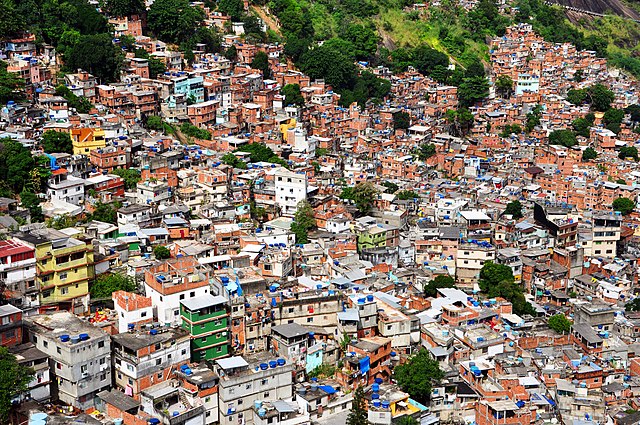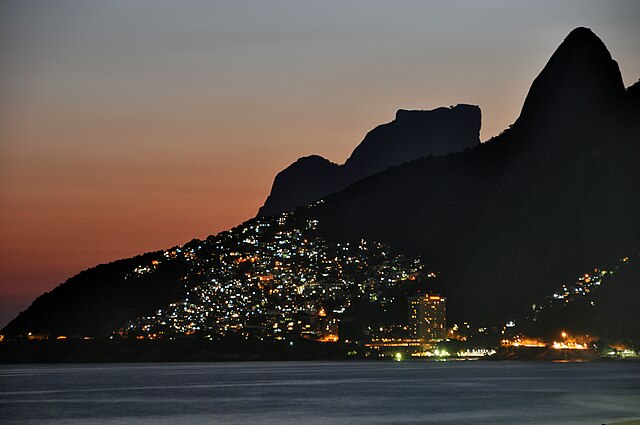Complexo do Alemão is a group of favelas in the North Zone of Rio de Janeiro, Brazil.
Gondola lift leaving the Estação da Baiana (Baiana Station) within the Complexo do Alemão; which was used by local residents and tourists prior to its closure.
A Brazilian AAV on a street in the Complexo do Alemão, November 2010
Police entering the Complexo do Alemao during the 2010 Rio de Janeiro Security Crisis
The Teleférico do Alemão is used by both favela commuters to the closer urban train station and tourist alike.
Favela is an umbrella name for several types of working-class neighborhoods in Brazil. The term, which means slum or ghetto, was first used in the Slum of Providência in the center of Rio de Janeiro in the late 19th century, which was built by soldiers who had lived under the favela trees in Bahia and had nowhere to live following the Canudos War. Some of the last settlements were called bairros africanos. Over the years, many former enslaved Africans moved in. Even before the first favela came into being, poor citizens were pushed away from the city and forced to live in the far suburbs.
Rocinha is the largest hill favela in Rio de Janeiro (as well as in Brazil and the second largest slum and shanty town in Latin America). Although favelas are found in urban areas throughout Brazil, many of the more famous ones exist in Rio.
Rio's Santa Teresa neighborhood features favelas (right) contrasted with more affluent houses (left). The Christ the Redeemer, shrouded in clouds, is in the left background.
Then U.S. president Barack Obama visiting Rio's Cidade de Deus (City of God) favela. This favela started out as public housing built on marshy flatlands in the city's western suburbs.
The lights of Vidigal favela in Rio de Janeiro as seen from Ipanema and Leblon beaches. The cone spire to the far right is part of the Morro Dois Irmãos.








